In this lesson on music theory, we will be exploring the E flat melodic minor scale. This diatonic scale begins and ends on an Eb note. The purpose of creating melodic minor scales was primarily to aid in the creation of melodies. When played in ascending order, the melodic minor scale is identical to a major scale, but with a flattened third note. On the other hand, when played in descending order, it uses the same pitches as a natural minor scale.
Contents
NOTES ON THE E FLAT MELODIC MINOR SCALE
The Eb melodic Minor Scale notes ascending are: Eb, F, Gb, Ab, Bb, C, D
The scale notes of the Eb melodic minor descending are: Eb Db Cb Bb Ab Gb F Eb
E FLAT MELODIC MINOR INTERVALS
The melodic minor scale is very similar to the natural minor scale, with the exception of a raised 6th and 7th note by a semitone (half step) when played in ascending order. However, when played in descending order, it is exactly the same as the natural minor scale. This alteration changes the minor 2nd interval between the 5th and 6th notes to a major 2nd interval. Additionally, there is another major 2nd interval between the 6th and 7th notes. It’s important to note that a major 2nd interval is equivalent to a tone or a whole step, such as Bb-C or C-D.
Below, you can see an octave of the Eb melodic minor scale with labeled intervals. It’s important to remember that these intervals will remain the same for all ascending melodic minor scales.

The descending melodic minor scale has the same intervals as a natural minor scale, which are displayed below.

THE MELODIC MINOR SCALE FOMULAR
The melodic minor scale formula is based on the natural minor scale but rather than being the same notes both ascending and descending they are different.
- On the way up we have a sharpened 6th and 7th degree
- On the way down these are lowered so the scale becomes it’s natural formula.
HOW TO PLAY THE E FLAT MELODIC MINOR SCALE
On piano
To play both the ascending version of the melodic minor scale, you can refer to the diagram below. The fingerings are labeled beneath the scale.

To play the Eb melodic minor scale in desending, you can refer to the diagram provided below.

On guitar
The melodic minor scale can be played in various positions on the guitar.
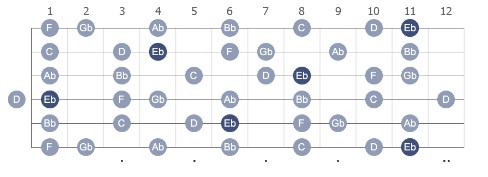
THE KEY SIGNATURE OF THE Eb MELODIC MINOR
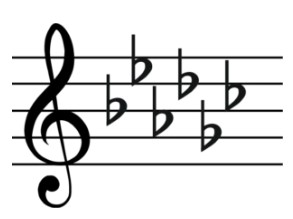
The melodic minor scale is often found in musical compositions that are in a minor key. Therefore, if we’re using the E flat melodic minor scale, our composition will be in the key of Eb (natural) minor. The Eb minor key is related to the Gb major scale, with both scales having a key signature of one flat.
E FLAT MELODIC MINOR ON CLEFS
Below is the Eb Melodic Minor Scale written in the treble clef, bass clef, alto clef and tenor clef including both ascending and descending.
Treble Clef
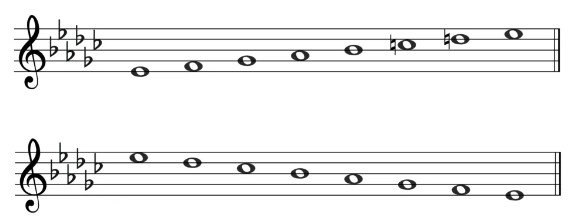
Bass Clef
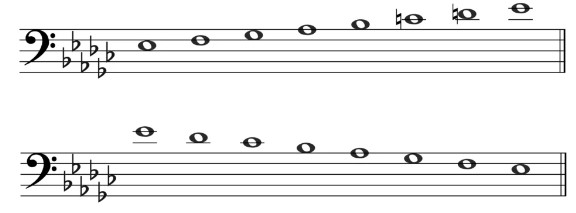
Alto Clef

Tenor Clef
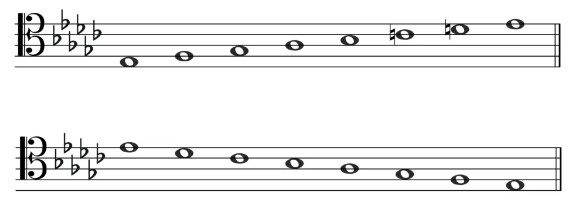
CHORDS IN Eb MELODIC MINOR SCALE
The notes of the E flat melodic minor scale can be utilized to form chords, and you can find out more about this in our article on E flat melodic minor chords. The chords listed below are the chords that can be found in the Eb melodic minor scale.

THE JAZZ E FLAT MELODIC MINOR SCALE
The jazz melodic minor scale is distinct from the standard melodic minor scale. As we have observed in classical music, the ascending melodic minor scale varies from the descending melodic minor scale. However, in jazz, both versions are identical, and both the 6th and 7th degrees are raised. Essentially, the jazz melodic minor scale corresponds to the ascending version of the classical music melodic minor scale.
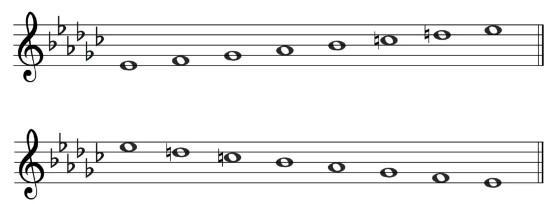
If you’re interested in learning more about music scales, chords, and musical theory, visit our Guitar tunio today
